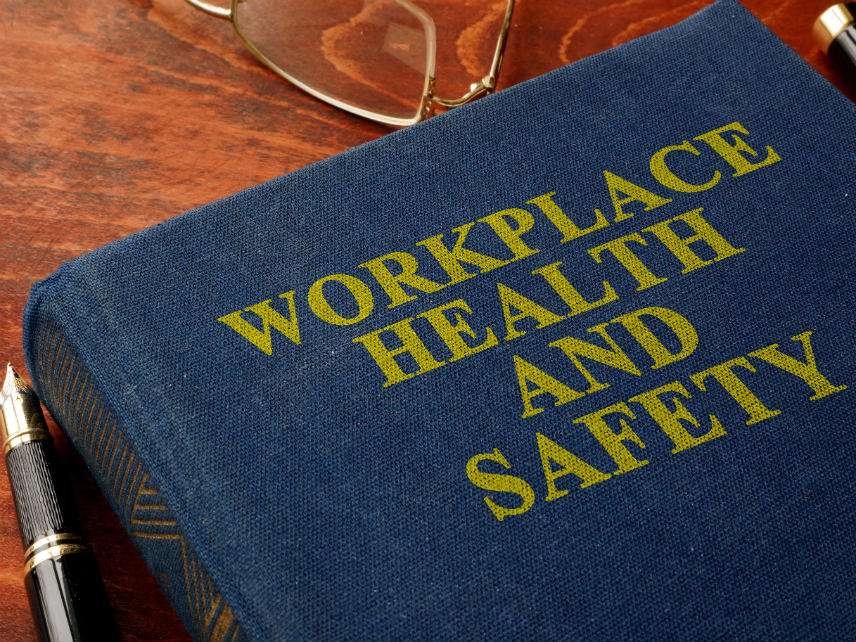Will Deregulation Kill Workers?
Don't freak out about a slight fall in the number of federal safety inspectors.

A temporary federal hiring freeze last year saw staffing numbers at the Occupational Safety and Health Administration (OSHA) fall by about 4 percent. Forty of the agency's approximately 1,000 inspectors departed without replacements filling their vacated positions.
Some observers see this as an example of deregulatory fervor running amuck and costing lives. "The bottom line," wrote former OSHA official Jordan Barab, "is that shrinking government is not just about reducing employees and 'bureaucrats,' or combating 'waste, fraud and abuse,' it means limbs severed and lives lost."
"While Trump might say we need smaller budget, smaller government, at the end of the day I think workers would rather their health and safety thought of," says Marni Von Wilpert of the Economic Policy Institute. A declining number of OSHA inspectors, managers, and other staff, she tells Reason, are putting lives at risk.
In fact, as with most critiques of the Trump administration's rather marginal regulatory rollbacks, these worries about a small decline in the number of safety snoops are overwrought. They carry an implicit assumption that only federal regulation can keep workers safe, but the evidence suggests the opposite: While the number of OSHA inspectors per capita has declined, American workplaces have only gotten safer.
Since agency's founding in 1971, the number of OSHA inspectors has stayed pretty consistent, never going above 1,500; it has hovered around 1,000 since the early 1980s. During that same time, the number of workplaces in the United States has expanded rapidly. So the ratio of inspectors to workers has fallen from roughly 15 inspectors for every million employees in 1980 to 6.8 per million in 2016.
"The economy has been growing and jobs have been growing. OSHA's ability to keep up with workplace safety has been shrinking," von Wilpert says.
Yet workers are safer on the job now than at almost anytime before.
In 1980, 13,800 people died at work—a workplace fatality rate of 13 deaths per 100,000 workers. By 2015, worker deaths were down to 4,836, making for a workplace fatality rate of 3.4 deaths per 100,000 workers.
Workplace fatalities were also falling at a continous rate in the decades prior to OSHA's creation, dropping from 37 deaths per 100,000 workers in 1933 to 17 per 100,000 workers the year OSHA was created.
None of that surprises John Leeth, a Bentley University economist who has researched workplace safety. A marginal decline in the number of OSHA inspectors in nothing to be concerned about, he says.
"It's hard to say that increasing the number of inspectors for OSHA or reducing them by small amounts is going to have much of an impact one way or another," Leeth tells Reason.
Employers have much stronger incentives than OSHA to provide a safe workplace. Each state, for example, requires employers to purchase workers compensation insurance for their employees. Those policies cost employers $91.8 billion in 2014, according to a study conducted by the National Academy of Social Insurance. Total OSHA penalties in that same year totaled only $143.5 million.
Like other forms of insurance, workers comp grows more expensive with new injuries and accidents. Leeth estimates that this incentive to improve workplace safety is responsible for up to a 22 percent reduction in workplace fatalities.
Labor markets themselves provide another major incentive for employers to provide safer working conditions. "Workers don't like risk," says Leeth. "There is nothing to be gained by taking a risky job other than the employer giving you something in return."
A 2012 working paper co-authored by Leeth found that employers paid an additional $100 billion a year in this kind of danger pay, easily dwarfing the costs of OSHA fines and enforcement actions.
The ability to sue over workplace injuries and health hazards also encourage employers to protect employer safety.
"If you rank the three other areas that provide incentives, you're talking multi-billion dollars, and then you get to OSHA and the expected penalty is incredibly small," says Leeth.
Having 40 fewer inspectors isn't likely to change that.
Rent Free is a weekly newsletter from Christian Britschgi on urbanism and the fight for less regulation, more housing, more property rights, and more freedom in America's cities.


Show Comments (22)